Stimulus-food pairings produce stimulus-directed touch-screen responding in cynomolgus monkeys (macaca fascicularis) with or without a positive response contingency
- PMID: 20119521
- PMCID: PMC2707138
- DOI: 10.1901/jeab.2009.92-41
Stimulus-food pairings produce stimulus-directed touch-screen responding in cynomolgus monkeys (macaca fascicularis) with or without a positive response contingency
Abstract
Acquisition and maintenance of touch-screen responding was examined in naïve cynomolgus monkeys (Macaca fascicularis) under automaintenance and classical conditioning arrangements. In the first condition of Experiment 1, we compared acquisition of screen touching to a randomly positioned stimulus (a gray square) that was either stationary or moving under automaintenance (i.e., banana pellet delivery followed an 8-s stimulus presentation or immediately upon a stimulus touch). For all subjects stimulus touching occurred within the first session and increased to at least 50% of trials by the end of four sessions (320 trials). In the subsequent condition, stimulus touching further increased under a similar procedure in which pellets were only delivered if a stimulus touch occurred (fixed ratio 1 with 8-s limited hold). In Experiment 2, 6 naive subjects were initially exposed to a classical conditioning procedure (8-s stimulus preceded pellet delivery). Despite the absence of a programmed response contingency, all subjects touched the stimulus within the first session and responded on about 50% or more of trials by the second session. Responding was also sensitive to negative, neutral, and positive response contingencies introduced in subsequent conditions. Similar to other species, monkeys engaged in stimulus-directed behavior when stimulus presentations were paired with food delivery. However, stimulus-directed behavior quickly conformed to response contingencies upon subsequent introduction. Video recordings of sessions showed topographies of stimulus-directed behavior that resembled food acquisition and consumption.
Keywords: automaintenance; autoshaping; monkey; negative automaintenance; response acquisition; touch screen.
Figures
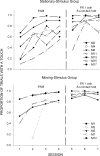
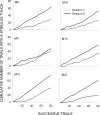
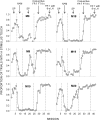
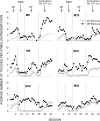
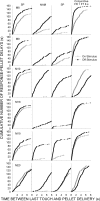
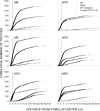
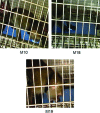
Similar articles
-
Sex and the stimulus-movement effect: Differences in acquisition of autoshaped responding in cynomolgus monkeys.Physiol Behav. 2017 Mar 15;171:40-49. doi: 10.1016/j.physbeh.2016.12.028. Epub 2016 Dec 23. Physiol Behav. 2017. PMID: 28025092
-
Cocaine impairs acquisition of an autoshaped lever-touch response.Psychopharmacology (Berl). 1997 Apr;130(3):213-21. doi: 10.1007/s002130050231. Psychopharmacology (Berl). 1997. PMID: 9151354
-
Negative automaintenance omission training is effective.J Exp Anal Behav. 2006 Jul;86(1):1-10. doi: 10.1901/jeab.2006.36-05. J Exp Anal Behav. 2006. PMID: 16903489 Free PMC article.
-
Competition between stimulus-reinforcer contingencies and anticipatory contrast.J Exp Anal Behav. 1992 Sep;58(2):287-302. doi: 10.1901/jeab.1992.58-287. J Exp Anal Behav. 1992. PMID: 1402603 Free PMC article.
-
Effects of food-pellet size on rate, latency, and topography of autoshaped key pecks and gapes in pigeons.J Exp Anal Behav. 1996 Jan;65(1):21-35. doi: 10.1901/jeab.1996.65-21. J Exp Anal Behav. 1996. PMID: 8583197 Free PMC article.
Cited by
-
Group-based, autonomous, individualized training and testing of long-tailed macaques (Macaca fascicularis) in their home enclosure to a visuo-acoustic discrimination task.Front Psychol. 2022 Nov 29;13:1047242. doi: 10.3389/fpsyg.2022.1047242. eCollection 2022. Front Psychol. 2022. PMID: 36524199 Free PMC article.
-
The Impact of Pretraining on Autoshaping and Operant Acquisition in Rats is Significant but Transient.Learn Motiv. 2025 May;90:102112. doi: 10.1016/j.lmot.2025.102112. Epub 2025 Mar 11. Learn Motiv. 2025. PMID: 40786537
References
-
- Balsam P.D, Drew M.R, Yang C. Timing at the start of associative learning. Learning and Motivation. 2002;33:141–155.
Publication types
MeSH terms
LinkOut - more resources
Full Text Sources

